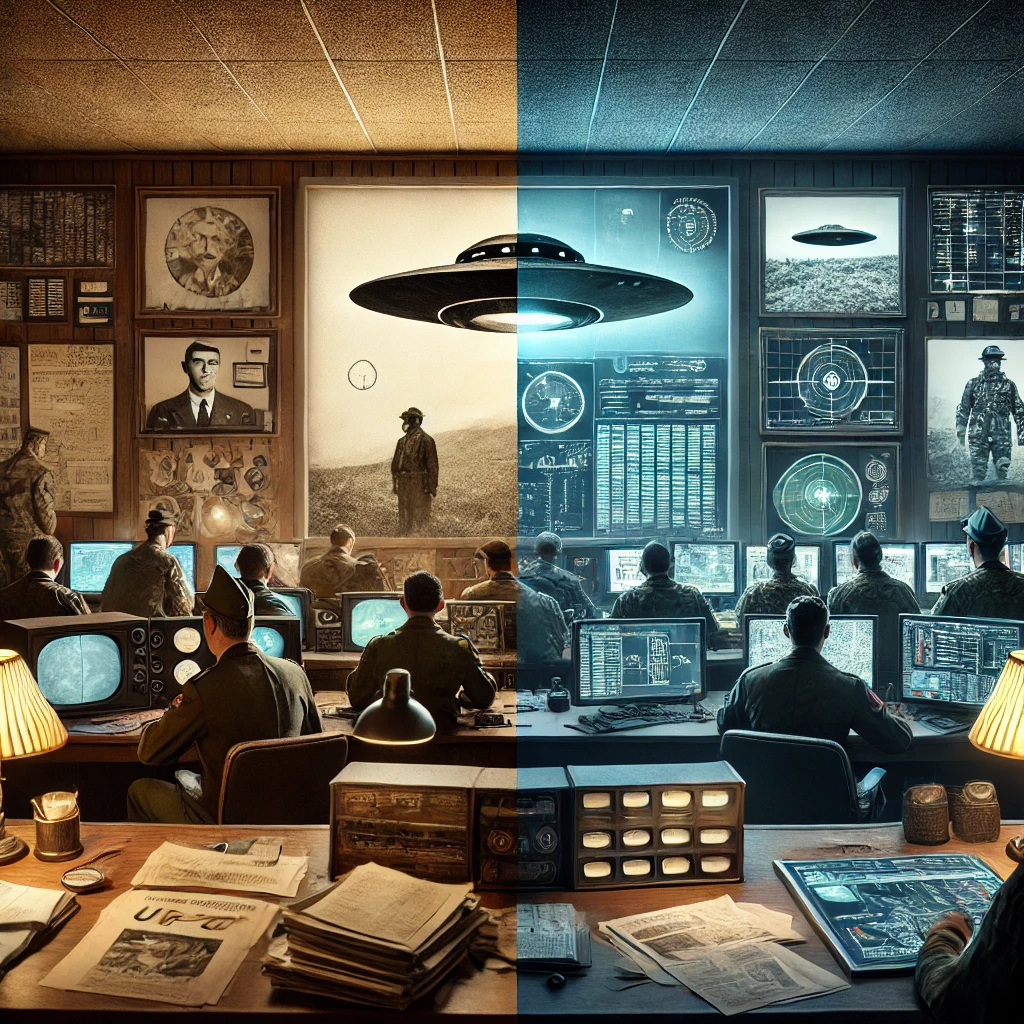The UFO Cover-Up in 10 Minutes

In New Jersey and other places, reports of unusual aerial phenomena are once again surfacing during the current 2024 UFO flap, reminiscent of the state’s historical “flap” periods. Richard Dolan refers to 1952, as a year of significant UFO activity, stating it seemed like “the entire nation was being invaded by UFOs.” Richard is identifying 1952 as the last large “flap,” a period marked by numerous and widespread UFO sightings reported by both civilians and military personnel.
A “flap” refers to a surge of UFO sightings in a particular region over a concentrated period, often resulting in heightened public interest and media attention. The term suggests a state of activity or commotion, reflecting the intrigue and speculation such events generate. These phenomena have included sightings of metallic spheres, triangular crafts, and anomalous lights in the night sky, prompting renewed discussions about their origins and implications.
Richard Dolan, much younger at the time, posted his video, “The UFO Cover-Up in 10 Minutes,” on YouTube 13 years ago. It encapsulates decades of evidence suggesting deliberate secrecy around UFOs by various governments. In it, Dolan discusses how documents obtained through the Freedom of Information Act (FOIA) revealed the gravity with which military and intelligence agencies treated these phenomena. For example, a 1947 memo from General Nathan Twining stated that UFOs were “something real and not visionary or fictitious,” describing their maneuverability and metallic appearance. Similarly, a 1952 CIA document expressed concern over high-speed, high-altitude objects near U.S. defense installations, acknowledging their inexplicable nature.
One particularly compelling case from 1976 involved a UFO sighting over Tehran, Iran. Civilians and military personnel observed a bright, unidentified object that disrupted the electronics of two Iranian fighter jets attempting to intercept it. This incident, documented by the U.S. Defense Intelligence Agency, highlighted the advanced and seemingly otherworldly capabilities of these objects, leaving experts baffled.
The 1976 Tehran incident showcased remarkable aerial capabilities of a UFO, including detaching a smaller craft that pursued an F-4 jet before rejoining its larger “mothercraft” with precision. Such technological feats remain baffling even by modern standards. Dolan argues that while evidence increasingly points to advanced technology, official narratives dismiss these phenomena, maintaining secrecy and avoiding public acknowledgment.
This dismissal is underscored by historical examples such as Project Blue Book and the Condon Committee. Dolan describes Project Blue Book as a superficial attempt to investigate UFO sightings, with the primary aim of reducing unexplained cases rather than genuinely analyzing them. A 1955 memo revealed the directive to “solve” cases by assigning plausible but unverified explanations, such as attributing sightings to birds. Similarly, the Condon Committee of the 1960s, initially presented as a scientific investigation, was allegedly predetermined to dismiss the UFO phenomenon. Internal dissent within the committee and its ultimate conclusion—despite 30% of cases remaining unexplained—highlight the lack of transparency in these efforts.
Fast-forwarding to 1997, Dolan critiques the Air Force’s explanation for the 1947 Roswell incident, where crash test dummies were claimed to have been mistaken for alien bodies. He points out the absurdity of such claims and emphasizes the persistent undercurrent of secrecy. As Dolan concludes, the world is advancing rapidly, and the continued denial of UFO realities may soon collapse under the weight of public scrutiny and growing evidence. The veil of UFO secrecy, he predicts, is nearing its end.


